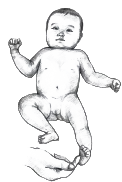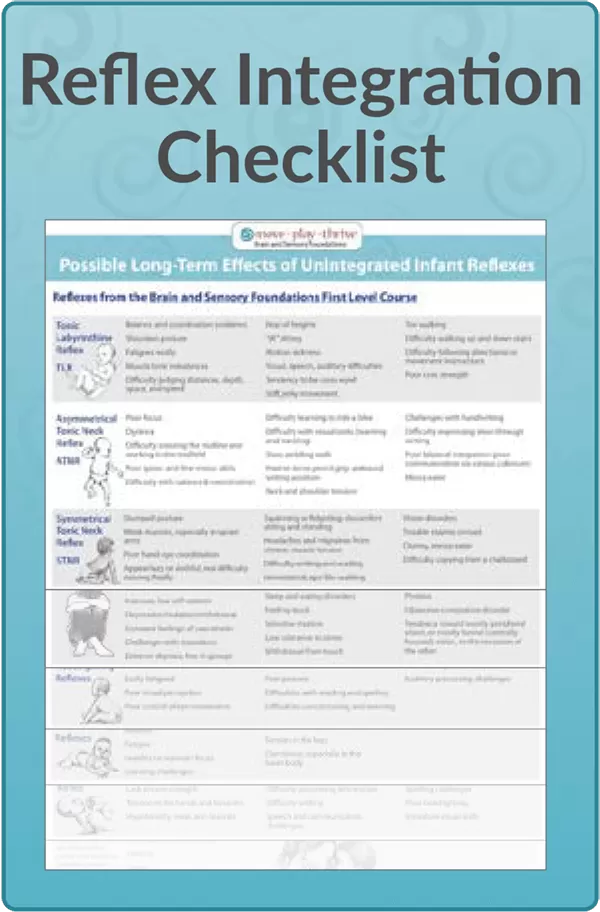Crossed Extensor Reflex
 The Crossed Extensor Reflex (CER) has a variety of characteristics, phases, and functions. It acts as a protective reflex in utero and early infancy. Later it supports independent limb-movement, optimal coordination, crawling, and symmetrical walking.
The Crossed Extensor Reflex (CER) has a variety of characteristics, phases, and functions. It acts as a protective reflex in utero and early infancy. Later it supports independent limb-movement, optimal coordination, crawling, and symmetrical walking.
At birth the CER should be a vigorous response to stimulation of the bottom of the foot: the opposite leg and hip flexes, then adducts and extends as if to push away the source of the noxious stimulus. The Crossed Extensor Reflex should be dormant between 1 and 4 months of age, but active later in life as a protective response when needed during upright walking. When we step on a sharp object, or need to move quickly to avoid injury, the CER involves a quick hop with a weight shift and extension of the opposite leg.
The CER is mediated at the level of the spinal cord, and is a complex neurological response involving both sides of the body and numerous nerve pathways. In addition to the spinal cord, the message is simultaneously sent to higher brain centers. For this reason the CER is called a contralateral, polysynaptic reflex arc.
Beyond its protective function, the CER is important for developing the brain and the body. Because this reflex involves crosslateral movement of the limbs, it has a significant impact on posture, weight shifting, and gait. It helps infants develop reciprocal kicking motions, and the ability to differentiate between the legs to create independent coordinated movement.
Development and integration of the CER is especially important for individuals with Cerebral Palsy or other neurological challenges that hinder the awareness of having two separate legs.
Possible Long-Term Effects of an Unintegrated Crossed Extensor Reflex include:
- Lack of coordination
- Abnormal crawling
- Inability to move legs independently
- Poor balance or ability to weight shift
- Abnormal walking gait
- Inability to ride a bike
- Chronic leaning to one side
- Poor posture
- Excessive muscle tension
- Hyperactivity or hypoactivity
- Fatigue
- Anxiety
- Behavior challenges
- Poor cognitive ability
- Slow processing
- Amphibian Reflex
- Asymmetrical Tonic Neck Reflex
- Birth and Bonding
- Crawling Reflexes
- Crossed Extensor Reflex
- Facial-Oral Reflexes
- Fear Paralysis Reflex
- Feet Reflexes—Plantar & Babkinski
- Foot Tendon Guard
- Hand Reflexes—Grasp, Palmar, and Babkin
- Headrighting Reflexes
- Infant Torticollis
- Landau Reflex
- Moro Reflex
- Parachute Reflex
- Pull-to-Sit Reflex
- Spinal Galant Reflex
- Spinal Perez Reflex
- Symmetrical Tonic Neck Reflex
- Tonic Labyrinthine Reflex
Sources
Gada, P. (2017, January 4). Crossed Extension reflex [Video]. YouTube. https://youtube.com/watch?v=iaNYiZFgbls
Masgutova, S. (2007). Integration of infant dynamic and postural reflex patterns: Neuro-sensory-motor and reflex integration method [Training manual].
Neeraja, K. P., (2006) Textbook of growth and development for nursing students. Jaypee Brothers Medical Publishers, Ltd.


